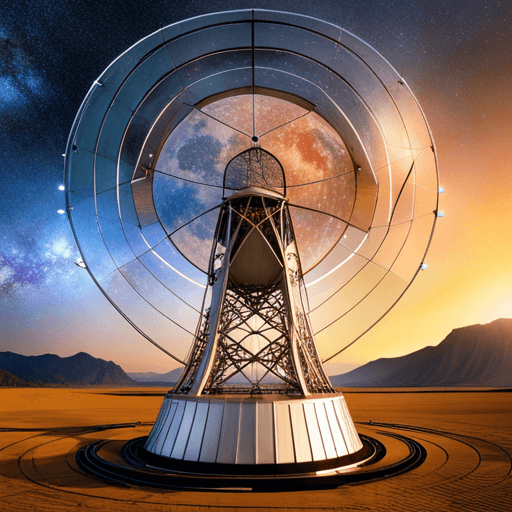Table of Contents
Welcome, Cosmic Adventurers!
Looking up at the night sky, have you ever felt a sense of awe and wondered what’s out there? Have you dreamt of exploring the universe from your backyard? Well, you’re in luck! Today, we’re going to discuss how to build a DIY radio telescope. Yes, you read that right, your very own radio telescope! Exciting, isn’t it? So let’s dive straight into the world of celestial exploration.
What is a Radio Telescope?
Before we start, it’s essential to understand what a radio telescope is. Unlike a regular optical telescope, which allows us to see visible light from celestial bodies, a radio telescope lets us ‘listen’ to the cosmos. It detects radio waves emitted by stars, galaxies, and other celestial objects. In essence, a radio telescope allows us to explore an entirely new dimension of the universe!
Building Your DIY Radio Telescope: A Step-by-Step Guide
Now that we understand what a radio telescope is, let’s dive into how we can build one at home. Buckle up, as we’re about to embark on an exciting DIY journey!
Materials You’ll Need
Here’s what you’ll need for this project:
- A parabolic dish or old satellite dish
- A radio receiver
- A Low Noise Amplifier (LNA)
- Coaxial cable
- A mount to hold the dish
- A laptop or computer for data collection and processing
Step 1: Setting Up the Dish
The dish will serve as the ‘ear’ of our telescope, capturing radio waves. If you have an old satellite dish lying around, that’s perfect. If not, you can find a parabolic dish online or at a local electronics store.
Step 2: Connecting the Radio Receiver
The radio receiver will be connected to the focal point of the dish. This is where the dish concentrates the radio waves it collects. You’ll need to attach the receiver using a suitable mount to ensure it stays in place.
Step 3: Adding the Amplifier
Radio signals from space are very weak. This is where the Low Noise Amplifier comes in. Connect the LNA between the dish and the receiver to amplify the signals without adding much noise.
Step 4: Connecting to Your Computer
Now, it’s time to connect your receiver to your computer using the coaxial cable. Your computer will be used to process the data and convert it into a format you can understand.
Step 5: Testing Your Radio Telescope
Once everything is set up, it’s time to test your DIY radio telescope! Point your dish at a known radio source (like the Sun or the Milky Way) and see what signals you pick up. Remember, patience is key when it comes to astronomy!
Conclusion
And there you have it, your very own DIY radio telescope! Building a radio telescope may seem daunting at first, but with some patience and perseverance, it’s an achievable and incredibly rewarding project. So, don your astronomer’s cap, step into your backyard, and embark on your journey to the stars.
Keep Exploring
The universe is a vast, mysterious place, and your new radio telescope is your ticket to unravelling its secrets. Remember, the joy of astronomy lies as much in the journey as in the destination. So keep exploring, keep asking questions, and let the cosmos surprise you. After all, who knows what fascinating new discoveries await you?
So, get out there, gaze at the stars, listen to the whispers of the cosmos, and most importantly, have fun on your astronomical adventure!

